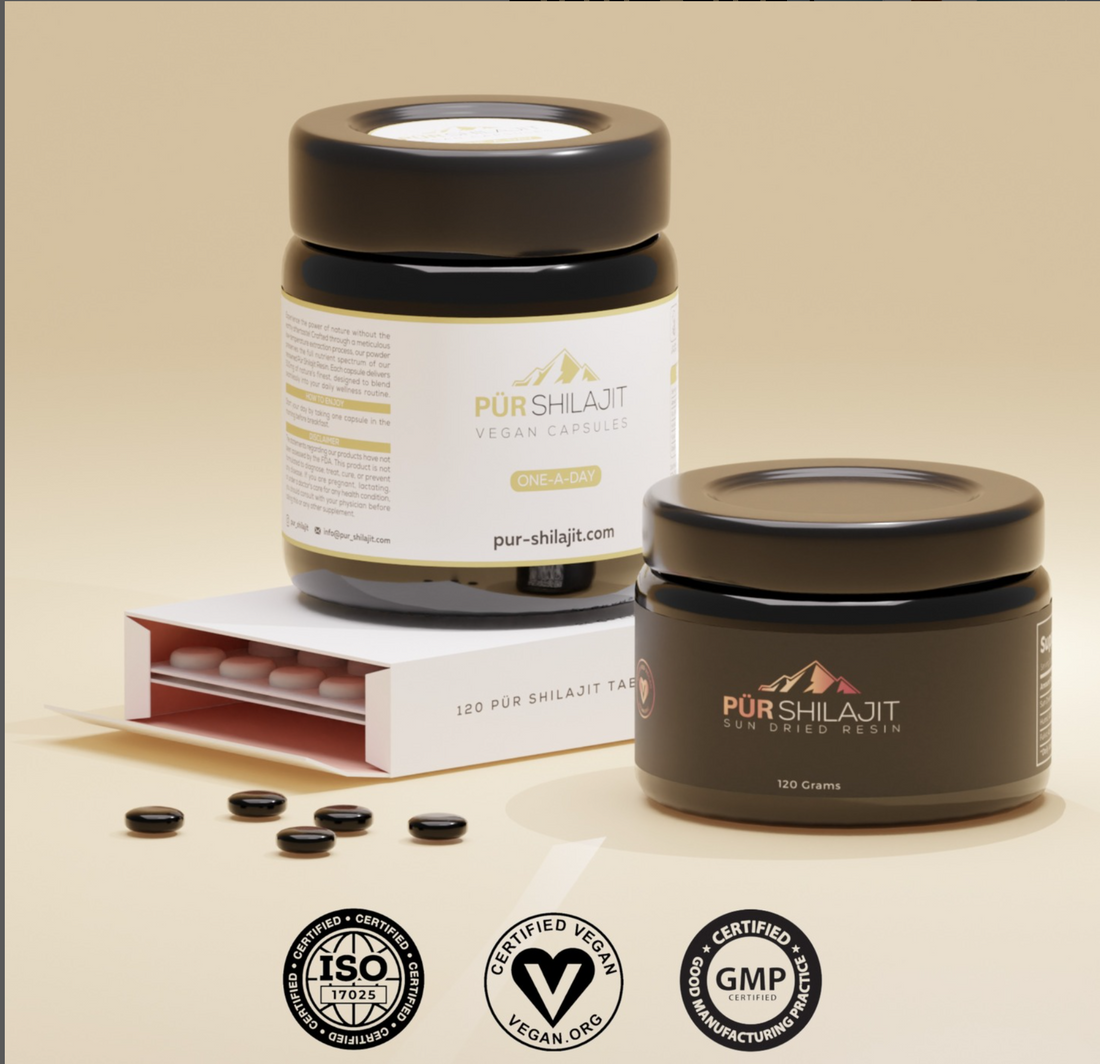
Fulvic and Humic Acids: Nature’s Nanocarriers for Nutrient Absorption and Detoxification
Share
Introduction: The Hidden Power of Humic Substances
Humic substances, humic acid, fulvic acid, and humin are complex organic molecules formed during the decomposition of plant and microbial matter. They are abundant in soils and sediments, but concentrated forms are found in certain deposits like shilajit. Fulvic acid is the most biologically active component, comprising up to 80 % of shilajit pmc.ncbi.nlm.nih.gov. Its low molecular weight (around 2 kDa) and solubility across pH ranges allow it to cross cell membranes and interact with metals pmc.ncbi.nlm.nih.gov. Humic acid has a higher molecular weight and solubility only in alkaline conditions; humins are insoluble (pmc.ncbi.nlm.nih.gov). Together, these substances act as natural chelators, antioxidants, and modulators of cellular processes.
Fulvic Acid and Nutrient Absorption
Fulvic acid possesses numerous functional groups (carboxyl, hydroxyl, carbonyl) that bind to metal ions and organic molecules. These properties allow it to:
- Chelate minerals and increase bioavailability. Fulvic acid forms stable complexes with minerals like iron, zinc, copper, magnesium, and selenium, transporting them through cell membranes. Research in aquatic and livestock models shows that FvA supplementation increases digestive enzyme activity and enhances absorption of phosphorus, and it can also improve copper uptake in cells and mediate drug delivery across the intestinal tract. pmc.ncbi.nlm.nih.gov.
- Modify the gut microbiome and digestive function. FvA influences the gut microbiota, increasing beneficial genera such as Lactococcus and Lactobacillus while reducing pathogens. (pmc.ncbi.nlm.nih.gov). It also increases digestive enzymes like lysozyme, proteases and phosphatases (pmc.ncbi.nlm.nih.gov). A balanced microbiome and efficient digestion support nutrient absorption and immune function.
- Transport toxins out of the body. Because FvA can bind heavy metals and toxins, it may facilitate their excretion. Animal studies suggest that FvA does not increase the uptake of pollutants like perfluorooctanesulfonate (PFOS), pmc.ncbi.nlm.nih.gov, alleviating concerns about toxin absorption.
Humic Acids and Detoxification
Humic acids have a higher molecular weight and more aromatic structures than fulvic acid. They are insoluble under acidic conditions but dissolve at high pH. Humic acids can:
- Bind heavy metals and organic pollutants. In environmental applications, humic substances immobilize metals and reduce their bioavailability. Microalgae and bacteria may use humic acids as electron shuttles to metabolize pollutants.
- Support gut health and immune regulation. Traditional medicine uses humic acids for digestive disorders, and researchers suggest that humic substances can modulate the immune system and act as antiviral agents. Their high molecular weight may limit absorption in the gut, but they can act locally to bind toxins and support the mucosal barrier.
Interactions with Microalgae and Structured Water
Microalgae like spirulina and chlorella provide proteins, vitamins, and antioxidants that work synergistically with fulvic and humic acids. Fulvic acid enhances mineral uptake from these superfoods, while humic substances bind toxins for excretion. Additionally, structured water produced by QELBY balls may enhance fulvic acid function by increasing proton availability and mitochondrial membrane potential (pmc.ncbi.nlm.nih.gov). Hydrating with structured water before consuming shilajit and microalgae could improve absorption and energy production.
Gut–Brain–Mitochondria Axis
The gut microbiome influences brain function and mitochondrial health. Fulvic acid’s ability to shift the microbiota toward beneficial species and increase digestive enzyme activity supports this axis. Microalgae add prebiotic fibers and bioactive compounds that nourish probiotics. Together, they may reduce systemic inflammation and support mental clarity and mood. pmc.ncbi.nlm.nih.gov
Safety
Fulvic and humic acid supplements vary in concentration and purity. Sourcing from reputable suppliers such as Soma Vibe Health ensures that products are free of heavy metals and microbial contaminants. As an affiliate of Pur-Shilajit we made sure to offer a pure, clean product that is 3rd party lab tested and an ISO certified lab.
Conclusion
Fulvic and humic acids are nature’s nanocarriers, binding to minerals, vitamins, and toxins to support nutrient absorption and detoxification. They form the backbone of shilajit’s benefits and play complementary roles with microalgae superfoods and structured water. By understanding how these humic substances work, you can harness their power to optimise digestion, immune function, and mitochondrial health.
References
- Carrasco‑Gallardo, C., et al., Shilajit: A Natural Phytocomplexpmc.ncbi.nlm.nih.gov.
- Winkler, J., & Ghosh, S., Therapeutic Potential of Fulvic Acid pmc.ncbi.nlm.nih.govpmc.ncbi.nlm.nih.gov.
- Hwang, S. G., et al., Effect of Antioxidant Water on the Bioactivities of Cells pmc.ncbi.nlm.nih.gov.
- Merino, J. J., et al., Long‑Term Algae Extract Supplementation pmc.ncbi.nlm.nih.gov.
